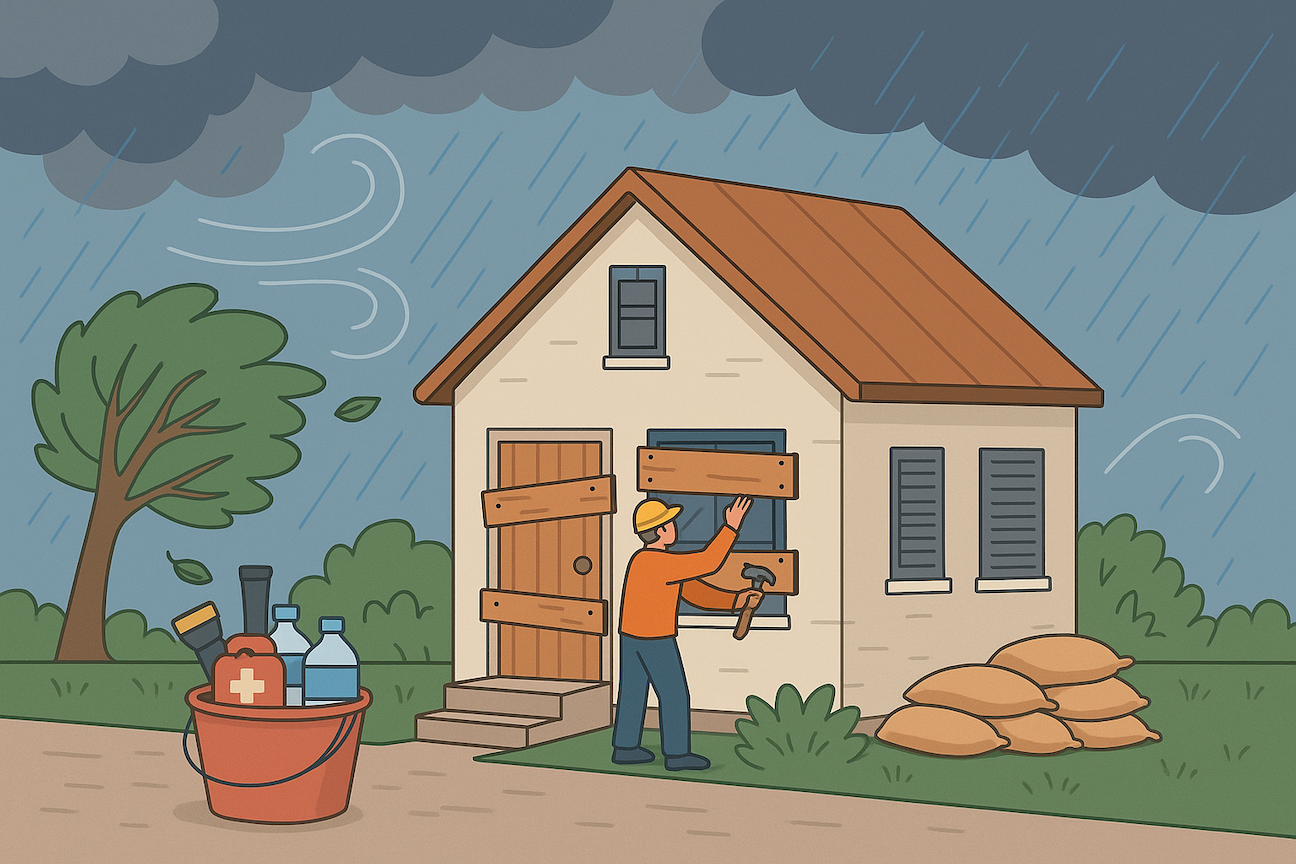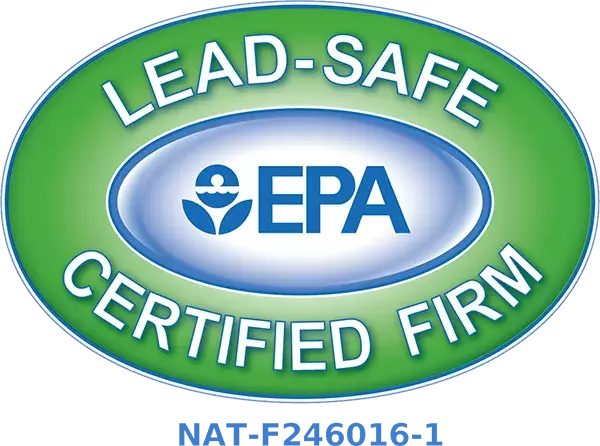As someone who has spent nearly two decades helping South Florida homeowners recover from storm damage, I’ve seen too many properties that could have been saved with proper preparation. Hurricane season runs from June 1 through November 30, yet year after year, I watch families scramble at the last minute when a storm is already bearing down on us.
At our South Florida restoration company, we’re not just here to clean up after disaster strikes. We’re your neighbors, and we want to help you protect your home before the winds start howling. The truth is, most storm damage I see could have been prevented or significantly reduced with the right hurricane season prep. Let me share what I’ve learned from 18 years of helping families recover, so you can avoid needing our emergency services in the first place.
Know Your Property’s Vulnerabilities
Every South Florida home has weak spots that hurricanes love to exploit. I’ve crawled through countless attics and basements, and I can tell you the most common culprits: flat or aging roofs, older windows and doors, poor foundation drainage, and those beautiful but vulnerable sliding glass doors we all love.
Here’s what many homeowners don’t realize: even a small roof leak that seems insignificant during normal weather can become a catastrophic entry point during a hurricane. I’ve seen minor vulnerabilities turn into major mold problems within 48 hours of storm passage. In our humid South Florida climate, any water intrusion becomes a breeding ground for mold faster than you might expect.
My advice? Walk around your property with a critical eye, or better yet, have a professional assess your home’s weak points before storm season peaks. At J&R Restoration, we offer pre-storm inspections because we’d rather help you prevent damage than restore it later.
Seal and Protect Key Entry Points
Your home’s openings are its most vulnerable points during a hurricane. I’ve seen storm damage that started with a single failed window seal and spread throughout an entire home. Start with your doors and windows, checking all weatherstripping and caulking. Look for any gaps or cracks around frames, and seal them properly.
If you have hurricane shutters, now is the time to inspect and test them. Make sure all hardware is secure and functioning. Don’t have shutters? Consider installing them, or at minimum, invest in high-impact glass or storm-rated window films for your most vulnerable windows.
Garage doors deserve special attention because they’re often the largest opening in your home and frequently the first to fail. Check the tracks, springs, and reinforcement bars. A failed garage door can create enough internal pressure to blow out other windows or even lift your roof.
Clear Your Property’s Exterior
I can’t count how many times I’ve seen preventable damage caused by flying debris. That dead palm frond you’ve been meaning to trim? It becomes a projectile in hurricane-force winds. Walk your property and remove anything that could become airborne: dead branches, loose roof tiles, unsecured patio furniture, planters, and grills.
Pay special attention to your gutters and downspouts. Clean them thoroughly and make sure they’re securely attached. Poor drainage doesn’t just cause flooding during the storm; it creates the perfect conditions for mold growth afterward. I’ve remediated countless homes where the real damage started with clogged gutters that couldn’t handle the storm surge.
Protect Against Water Intrusion
Water is hurricane damage’s most destructive force, and it’s sneaky. While you’re watching for obvious flooding, water finds ways into your home through compromised roofs, failed seals, and overwhelmed drainage systems.
Start with your roof. Look for loose or missing shingles, damaged flashing around chimneys and vents, and any signs of previous leaks. If you have a tile roof, check for cracked or shifted tiles. These small issues become major problems when hurricane winds get underneath them.
If your area is prone to flooding, consider installing a sump pump or backflow valves if you don’t already have them. Know where your home’s main water shutoff valve is located and make sure everyone in your family knows how to use it. I’ve seen homes where the storm passed, but internal flooding continued for hours because no one could stop the water flow.
Sandbags and flood barriers can help, but remember that even after the storm passes, standing water continues to cause damage. Every hour that water sits in your home increases the likelihood of permanent damage and mold growth.
Prevent Mold Before It Starts
This is where my expertise really comes into play. Mold doesn’t wait for convenient timing. In South Florida’s humidity, mold spores can begin colonizing within 24 to 48 hours of water exposure. I’ve seen beautiful homes become uninhabitable because mold took hold in the chaos following a storm.
If you have areas in your home that tend to stay humid (basements, laundry rooms, bathrooms without proper ventilation), run dehumidifiers and air purifiers now, before storm season intensifies. These areas are mold’s favorite breeding grounds when storm damage introduces additional moisture.
If you’ve had any past water damage or leaks, even if they seemed minor, consider a pre-season mold inspection. I’ve found hidden mold colonies behind walls and under flooring that homeowners never suspected. It’s better to address these issues now than discover them in the aftermath of a hurricane.
One more thing: skip the DIY bleach solutions you’ll find online. Real mold remediation requires professional equipment and expertise. Surface cleaning might make it look better temporarily, but it rarely addresses the root problem.
Prepare a Hurricane Emergency Kit
While this isn’t my area of expertise, I’ve seen enough families in crisis to know the basics matter. Stock up on water (one gallon per person per day for at least three days), flashlights, batteries, medications, and important documents. Store documents and valuables in waterproof containers because water damage affects more than just your structure.
Keep cash on hand. After Hurricane Andrew, I remember ATMs and credit card systems being down for days. Having cash helped families get immediate supplies and services.
For a comprehensive supply checklist, Florida’s Division of Emergency Management has an excellent resource that covers everything you might need.
Make a Family Emergency Plan
Your family should know exactly what to do if evacuation becomes necessary. Plan your routes, identify shelters, and establish communication strategies. If you have elderly family members or anyone with mobility limitations, make sure their needs are specifically addressed in your plan.
Here’s something most people don’t think about: save our emergency number now, before you need it. In the chaos after a storm, you don’t want to be searching for reliable restoration services. J&R Restoration’s emergency line is (561) 674-2332, and we’re available 24/7 during storm season.
Plan for Post-Storm Safety and Recovery
Even with perfect preparation, storms can cause unexpected damage. Never re-enter a damaged home until it’s been properly inspected. I’ve seen too many people injured by structural damage, gas leaks, or electrical hazards in their rush to assess their property.
When it is safe to enter, document everything with photos before you start cleanup. Your insurance claim depends on this documentation, and the better your records, the smoother your recovery process will be.
Watch for signs that indicate you need professional help: any smoke or strange odors, visible water damage, or signs of mold growth. These aren’t DIY situations, and attempting to handle them yourself often makes the problem worse.
At J&R, we handle insurance coordination and full-service restoration, so you don’t have to navigate the complex claims process alone while dealing with the stress of storm damage.
When to Call in the Pros
You should contact restoration professionals after any storm-related water intrusion, visible mold growth, or fire damage. Don’t wait to see if things “dry out on their own.” In South Florida’s climate, that approach almost always leads to bigger problems.
If persistent odors develop after a storm, that’s often a sign of hidden water damage or mold growth. Trust your nose and call for an inspection.
We also offer emergency board-up services to secure damaged properties immediately after a storm, preventing additional damage from weather exposure or security concerns. Our water mitigation and mold remediation services are available around the clock because we know disasters don’t wait for business hours.
Your Partner in Storm Preparedness
Eighteen years in this business has taught me that preparation isn’t just about protecting property; it’s about peace of mind. When you know you’ve done everything possible to protect your home and family, you can weather the storm with confidence instead of anxiety.
At J&R Restoration, we’re more than a cleanup crew. We’re your neighbors who understand South Florida’s unique challenges. We’re here to help before the storm hits, during the crisis, and throughout your recovery.
Hurricane season is inevitable, but devastating damage doesn’t have to be. Take action now while you have time to prepare properly.
Need help securing your home or inspecting past damage before hurricane season ramps up? Contact J&R Restoration for a local, expert evaluation. We’re here to help you prepare, not just recover.


